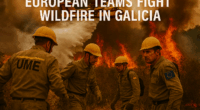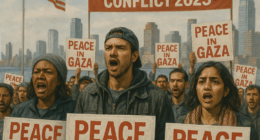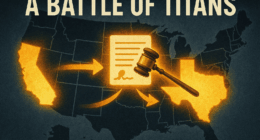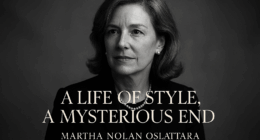The Trump-Zelenskyy meeting on August 18, 2025, in Washington, D.C., alongside European and NATO leaders, highlighted two critical conditions for ending Russia’s war in Ukraine: territorial exchanges and security guarantees. While no agreement was reached, the talks set the stage for a potential trilateral summit with Trump, Zelenskyy, and Putin. This article examines these conditions, their implications, and the broader context, drawing from multiple sources to provide a comprehensive overview.
Key Conditions for Peace
- Territorial Exchanges
- Trump’s Stance: During the meeting, Trump emphasized discussing “possible exchanges of territory” based on current front lines, a position he reiterated on Truth Social, stating Ukraine must cede Crimea and forgo NATO membership. He suggested a “land swap” involving Donetsk and Luhansk, aligning with Putin’s demands for Russia to control these regions.
- Zelenskyy’s Position: Zelenskyy has historically opposed territorial concessions but showed openness to discussing control “where the front line is now,” a shift from his earlier stance. He insists any territorial decisions must involve Ukraine directly, rejecting deals made over Kyiv’s head.
- Putin’s Demands: Russia seeks full control of Donetsk, Luhansk, Kherson, Zaporizhzhia, and Crimea, annexed in 2014 and 2022. Putin offered to freeze front lines in Kherson and Zaporizhzhia in exchange for Donetsk and Luhansk, a proposal Ukraine and Europe view as unacceptable without reciprocal concessions.
- Expert Analysis: Jennifer Kavanagh from Defense Priorities noted Ukraine may need to cede some territory, likely not returning to pre-2022 borders, with Crimea remaining under Russian control. However, Mujtaba Rahman from Eurasia Group argued it’s premature to discuss territorial exchanges, emphasizing post-WWII principles against redrawing borders by force. Any Russian control would likely be de facto, not de jure.
- Security Guarantees
- Trump’s Proposal: Trump claimed Putin agreed to NATO-style security guarantees for Ukraine, potentially involving Western military presence, a significant concession given Russia’s opposition to NATO expansion. However, details remain vague, and Trump ruled out U.S. troops, suggesting European-led forces.
- Zelenskyy’s Demands: Zelenskyy seeks robust, legally binding guarantees, unlike the 1994 Budapest Memorandum, which failed to protect Ukraine after it gave up nuclear weapons. He emphasized a strong Ukrainian military with no limits on size or arms, supported by allies.
- European Support: Leaders like Macron, Starmer, and Merz backed an “Article 5-like” agreement, ensuring collective defense if Russia attacks again. Macron stressed no restrictions on Ukraine’s military capacity.
- Challenges: Putin’s apparent openness to guarantees may be a tactic to push for Ukrainian demilitarization, a demand Kyiv rejects. Experts like Adm. James Stavridis noted Russia views NATO-esque protections as a threat, complicating negotiations.
Contextual Developments
- Alaska Summit Fallout: Trump’s August 15 meeting with Putin in Alaska shifted his focus from a ceasefire to a comprehensive peace deal, echoing Putin’s preference for territorial concessions over a pause in fighting. This alarmed European leaders, who fear it gives Russia an advantage.
- European Unity: Leaders like Macron, Starmer, Merz, Meloni, Stubb, von der Leyen, and Rutte presented a united front, pushing for Ukraine’s inclusion in talks and robust guarantees. They aim to counter Trump’s alignment with Putin and prevent unilateral deals.
- Russian Aggression: Hours before the meeting, Russian drone strikes killed civilians in Kharkiv, Zaporizhzhia, and Donetsk, signaling ongoing pressure. Zelenskyy called these “cynical” attempts to influence talks.
- Additional Issues: Beyond territory and guarantees, discussions include prisoner exchanges and the return of abducted Ukrainian children (over 35,000, per Yale’s Humanitarian Research Lab). These must precede major settlements, per Rahman.
Broader Implications
- For Ukraine: Ceding territory risks weakening defenses and economic assets in Donbas, but continued fighting could lead to greater losses, as Russian forces control nearly 20% of Ukraine. Zelenskyy’s shift suggests pragmatic acceptance of some losses, but he insists on sovereignty.
- For NATO and Europe: A successful deal could strengthen NATO’s role in Ukraine’s security, but failure risks division, with Trump’s policies straining trans-Atlantic unity. Europe’s commitment to sanctions and a “reassurance force” aims to deter Russia.
- For Russia: Putin’s battlefield gains reduce his incentive to compromise, but Trump’s threats of sanctions, like tariffs on Russian oil buyers, add pressure.
- Global Impact: The talks could reshape European security and U.S. foreign policy, with Trump’s deal-making approach testing alliances. A trilateral summit could be pivotal, but Putin’s silence since Alaska raises doubts about his commitment.
Reactions and Sentiment
- Zelenskyy: Expressed cautious optimism, thanking Trump for his efforts but stressing Ukraine’s central role. On X, he posted, “Russia can only be forced into peace through strength,” signaling resilience.
- Trump: Boasted on Truth Social about hosting European leaders, framing the summit as a historic opportunity, but his push for territorial concessions drew criticism.
- European Leaders: Macron and Starmer emphasized no territorial deals without Ukraine, while Merz called the talks “decisive days.” Von der Leyen praised Trump’s focus on abducted children, aligning with Melania Trump’s advocacy.
- Public Sentiment: X posts reflect division, with some like @joni_askola calling Trump’s strategy a “trap” for Ukraine, while others see it as pragmatic.
Conclusion
The Trump-Zelenskyy meeting underscores territorial exchanges and security guarantees as linchpins for ending the Russia-Ukraine war. While Trump pushes for land swaps and vague guarantees, Zelenskyy and Europe demand Ukraine’s sovereignty and robust protections. The planned trilateral summit offers hope, but Russian aggression and Putin’s demands complicate progress. As talks continue, the world watches whether diplomacy can halt Europe’s deadliest conflict since WWII.






